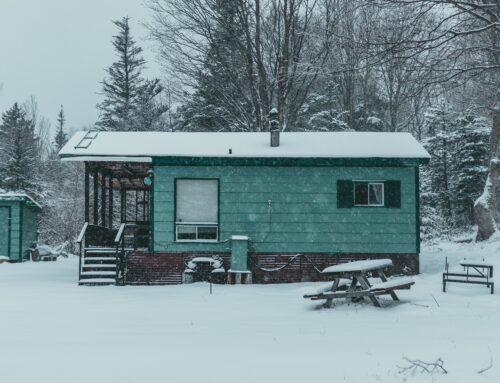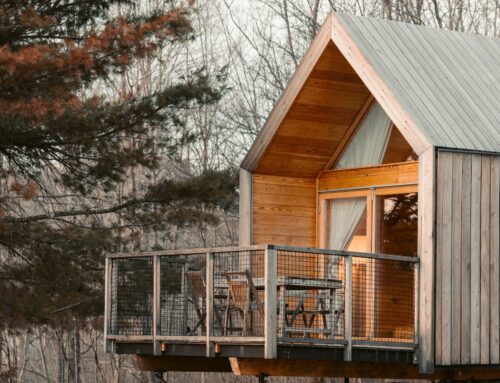North Carolina is one of the many places in the U.S. where housing costs have risen significantly over the past decade. Despite rising interest rates and uncertain economic conditions, property values are showing no signs of slowing down in the state’s biggest markets – leaving many North Carolinians in search of alternative solutions.
One idea that people are increasingly turning to is building accessory dwelling units (ADUs) on existing properties. In theory, ADUs offer a more affordable way to build more housing without requiring more developed land. Do ADUs hold the key, or at least a key, to alleviating the issue of rising housing costs in North Carolina?
Home and Property Prices are Soaring in North Carolina
After taking a dive in the financial crisis of the late 2000s, property values around the country have climbed steadily. Over the last decade, the U.S. has seen a nationwide average increase of 55.2% in the median sales price of homes according to data from the U.S. Census.
However, that growth has been more concentrated in some parts of the country than others, and North Carolina is one of those places. According to U.S. Federal Housing Finance Agency data, the house price index in North Carolina has increased by 112.9% since 2013 – more than twice the national average rate. That means that the average cost of a home in North Carolina has effectively doubled over the last decade.
Within North Carolina, the most significant growth has happened in the state’s biggest cities. In five of the state’s largest population centers, the house price index has increased at an even higher rate than the state average:
- Asheville: 133.5%
- Charlotte-Concord-Gastonia: 138.7%
- Durham-Chapel Hill: 119.4%
- Raleigh-Cary: 125.1%
- Wilmington: 131.9%
Rents are Also on the Rise
It’s not just homebuyers that are feeling the heat. As the cost of buying a house has gone up, so have rents. The U.S. as a whole has seen the average cost of rent increase by 49.8% since 2013 – only slightly less of an increase than the cost of buying a home.
Renters in North Carolina are no stranger to this trend, either. According to data from Zillow, the median rent in North Carolina climbed to $1,835 in October 2023. For many North Carolina natives and long-time residents, this figure may have seemed absurd not that long ago.

ADUs Can Add to Housing Stock Without Needing Additional Property
One of the main reasons North Carolina in particular has seen higher-than-average property increases is population growth. The state has become a popular place for people to relocate and start or grow their families, thanks to a booming economy and other factors. While the U.S. as a whole has seen a 6.2% increase in the total population over the past decade, North Carolina’s population has grown by more than 9.7%.
As jobs and more have drawn people to North Carolina, rental properties have become more and more scarce. According to U.S. Census data, rental vacancy has fallen by 43.8% in the last decade. The smaller supply of available rental units coupled with increased demand has been a major contributor to the increases in rent prices.
These factors have made it more expensive and more difficult to buy or rent property in North Carolina. But unlike new homes, ADUs are built on existing lots. That means ADUs offer a unique potential to increase housing supply without the time and expense of buying or developing new property.
This is especially significant in the state’s urban centers. Many North Carolina cities still have zoning restrictions that make it difficult or impossible to grow housing stock close to city centers. But even in areas that still have strict zoning that limits property owners to single-family houses, it has become easier to build an ADU. This presents an opportunity for people to increase housing supply and urban density in areas that provide access to jobs and services without having to wait for rezoning efforts from local governments.
ADUs Can Be More Affordable for Homeowners, Renters, and Investors
Accessory dwelling units are often easier to build than new traditional housing in cities, but they also tend to be much cheaper. Building one doesn’t require buying additional property at rapidly-increasing prices. They also tend to be much cheaper to build.
The median sales price of a new home in the U.S. reached $479,500 in October, 2023. By contrast, the typical cost range for a new ADU is between $80,000 and $200,000. That means that property owners can add to the housing supply in their city with much less money with an ADU than by building a new home.
This can benefit homeowners who want to add to their living space but may not have the money to buy a bigger home – especially with interest rates at historic levels. Owners can add a few extra bedrooms, work or hobby space, or a separate living space for friends or family without the expense and hassle of buying another home.
The relatively-low cost of ADUs also makes them an investment vehicle that can benefit investors and renters alike. Homeowners who want to make additional income from a rental property can enter the market at a much lower price point than buying a second home. Many lenders have even started to tailor loan products to help finance an ADU build.
And since it is typically cheaper to build an ADU than buy an independent investment property, investors can often charge less for rent while still maintaining similar profit margins. This is good for a single cash-strapped renter who may have a hard time finding affordable housing options in a convenient location. If enough homeowners decide to build ADUs as rentals on their property, it could even put downward pressure on the rental market as a whole, offering more widespread relief.
ADUs Offer an Affordable Housing and Investment Option for North Carolinians
The truth is that ADUs aren’t a complete solution to housing affordability issues in North Carolina and elsewhere. Economic conditions, regulations, or both will need to change for the situation at large to get better.
However, ADUs may be the right solution for individual homeowners, investors, and perhaps a few renters. They offer a relatively easy and affordable way to increase housing supply without having to wait for local and state governments to take action.






Leave A Comment